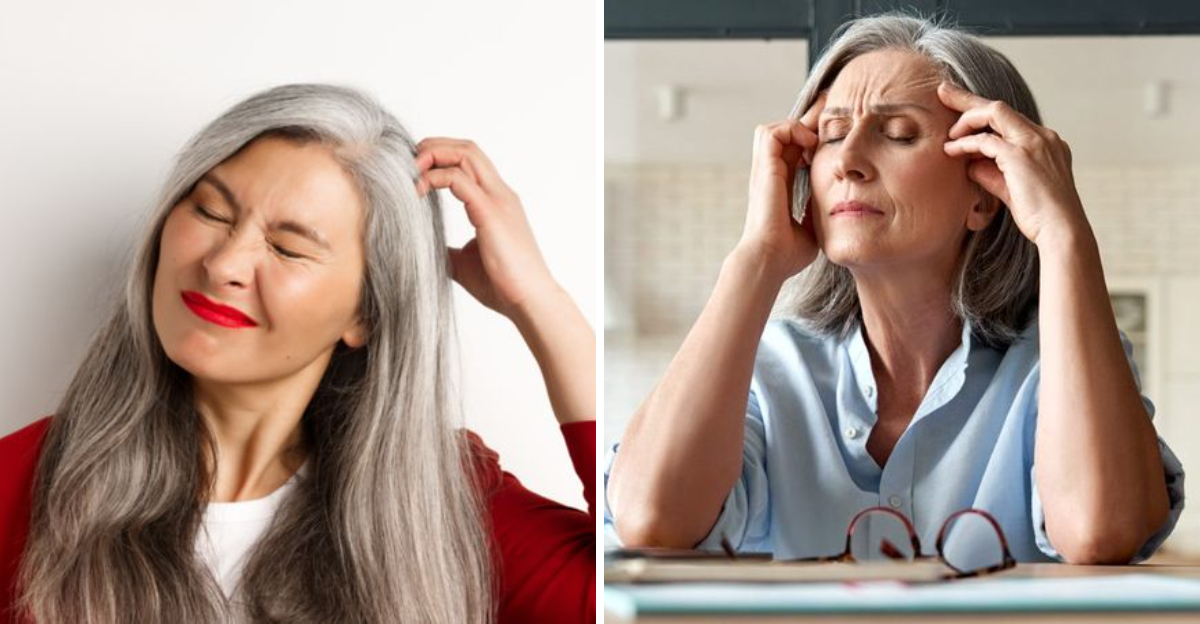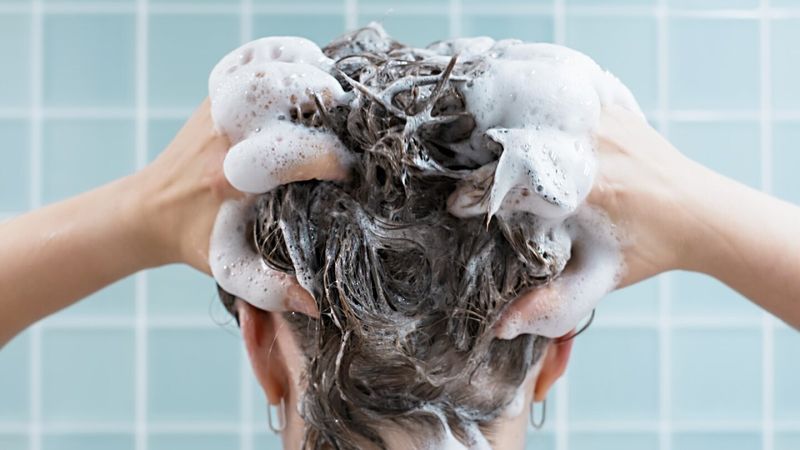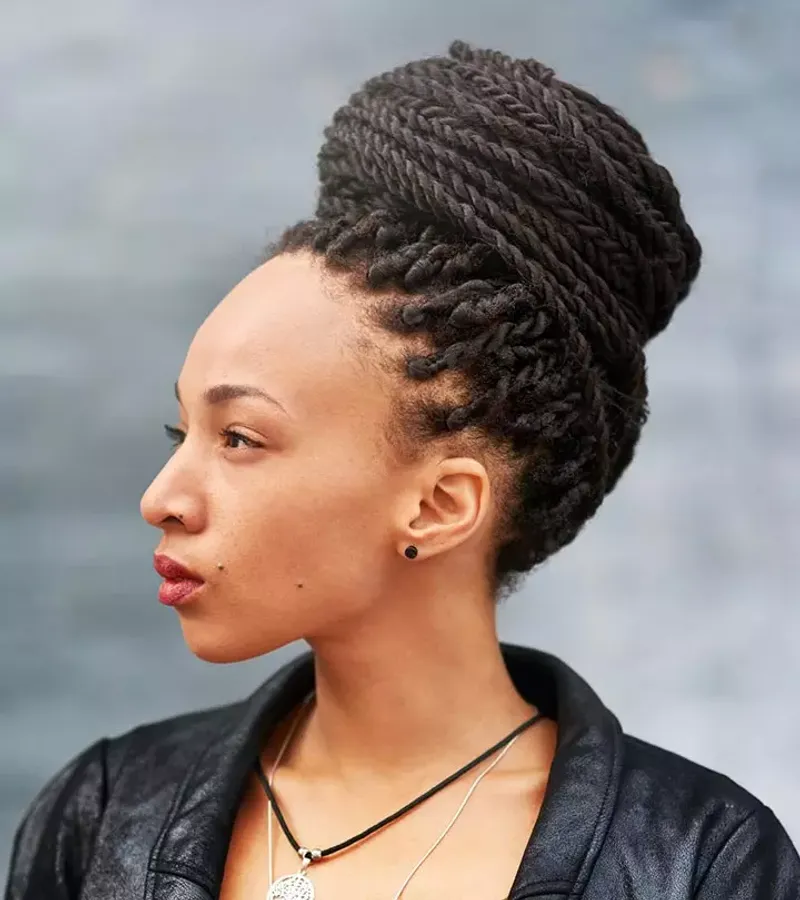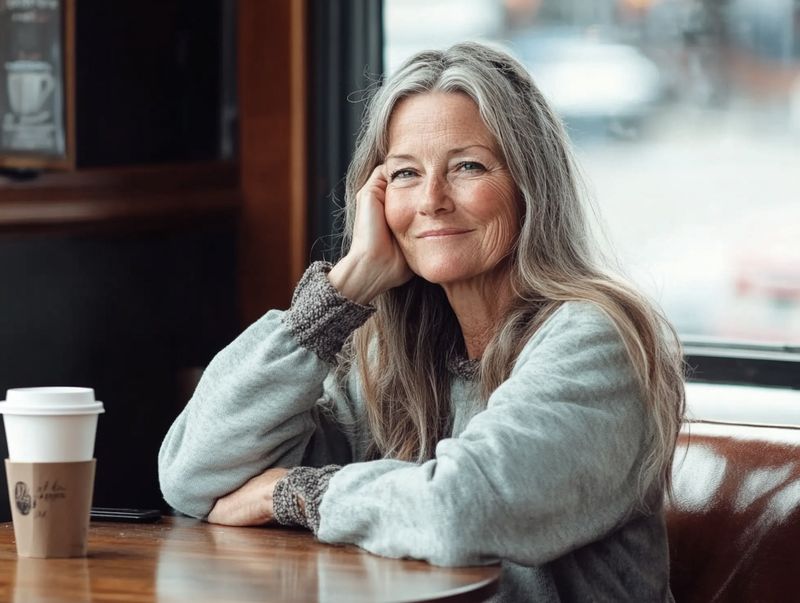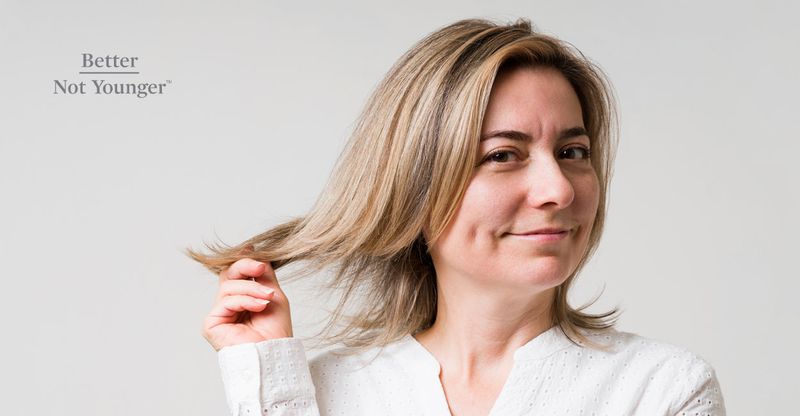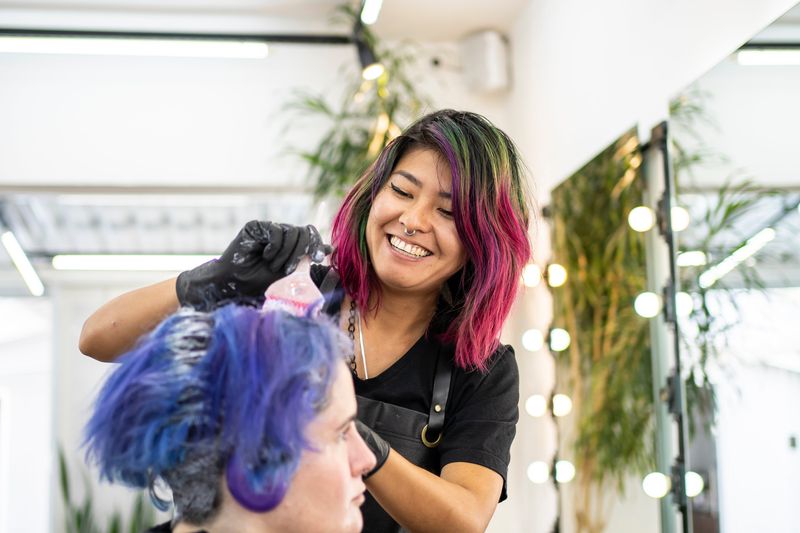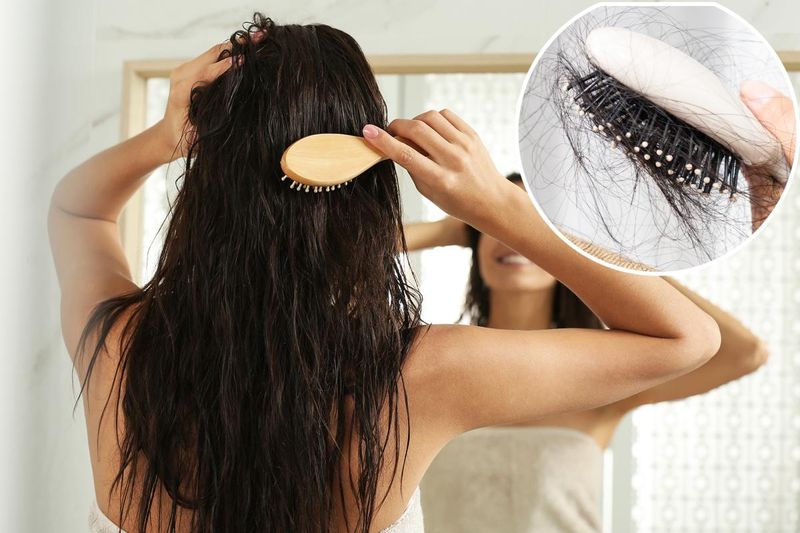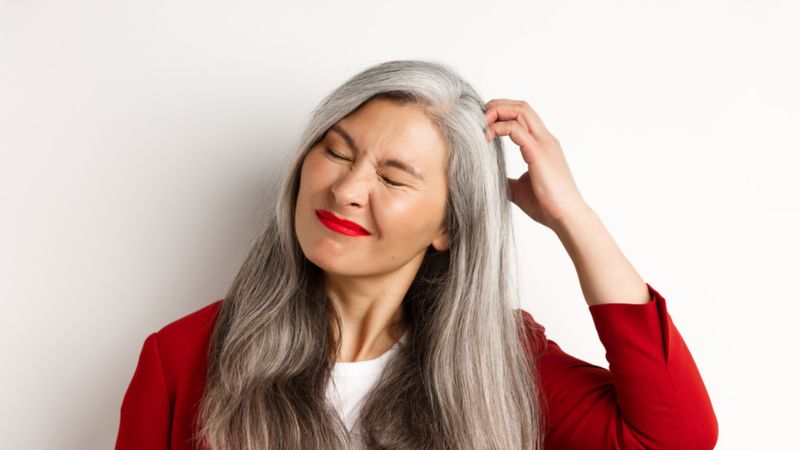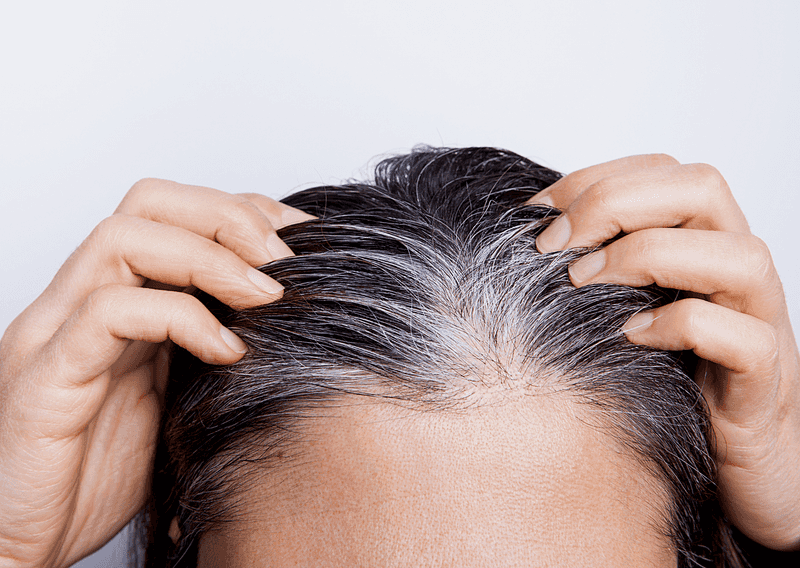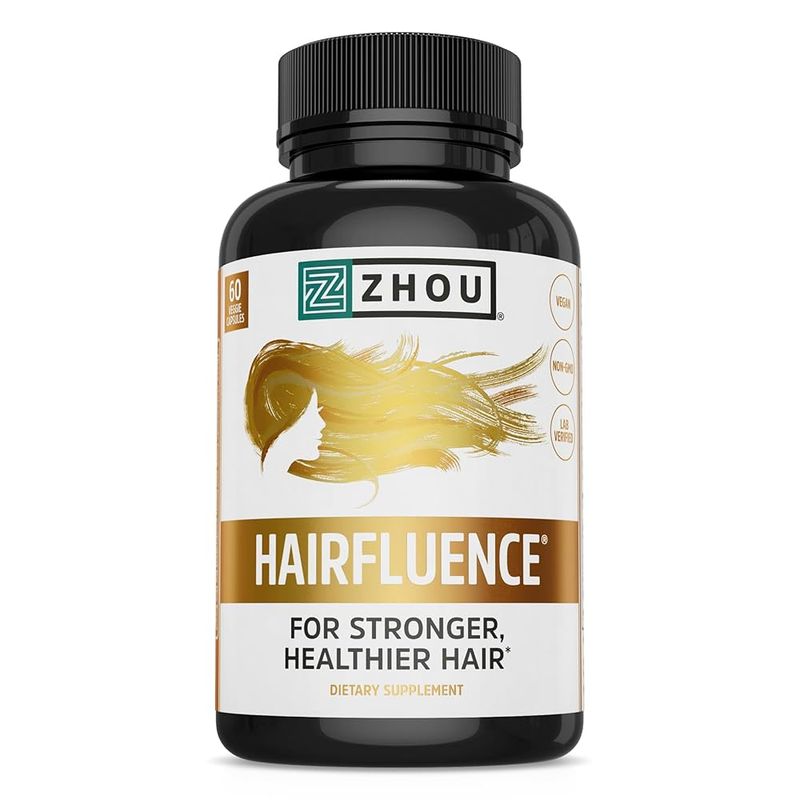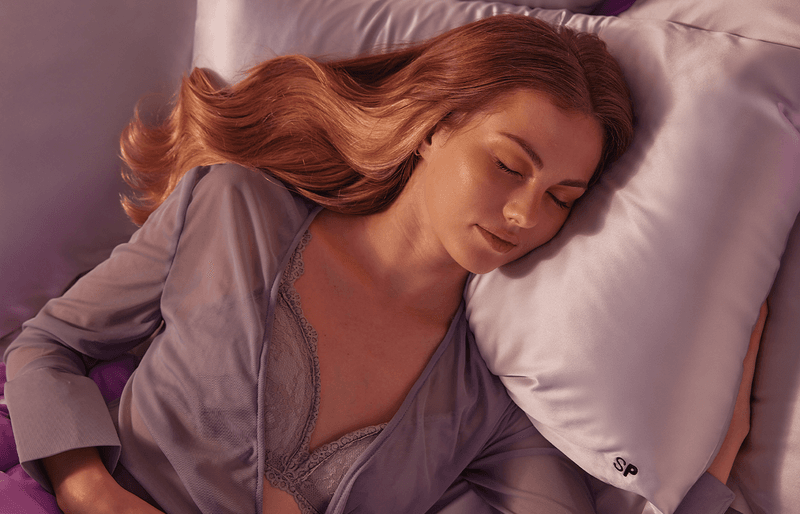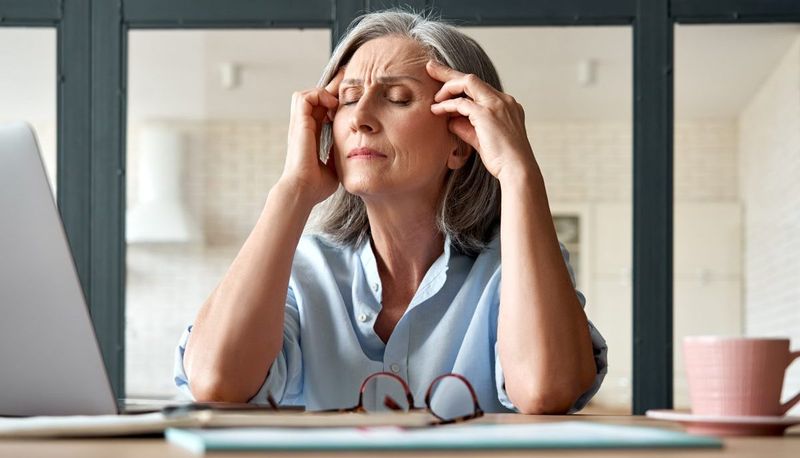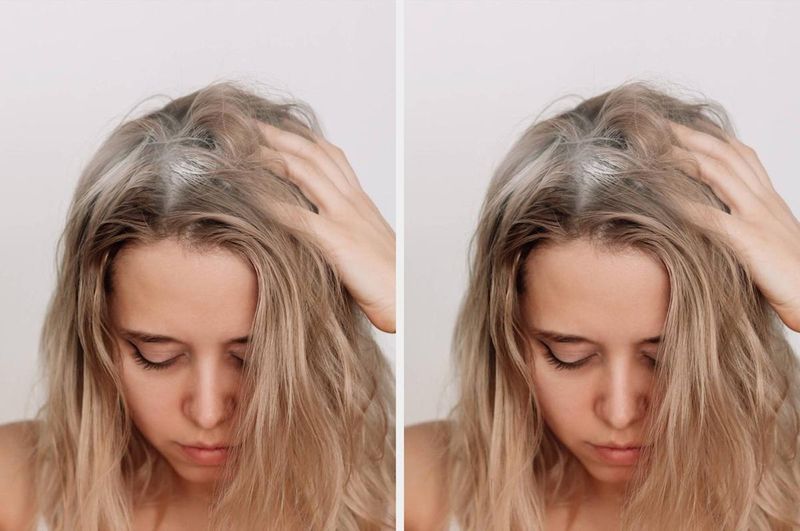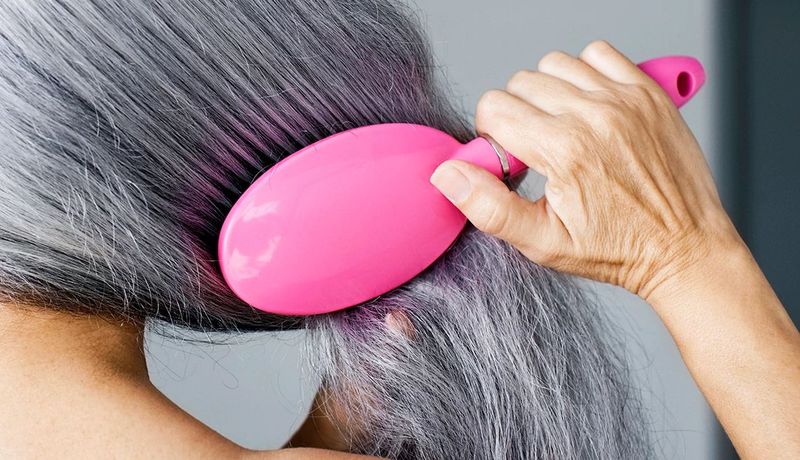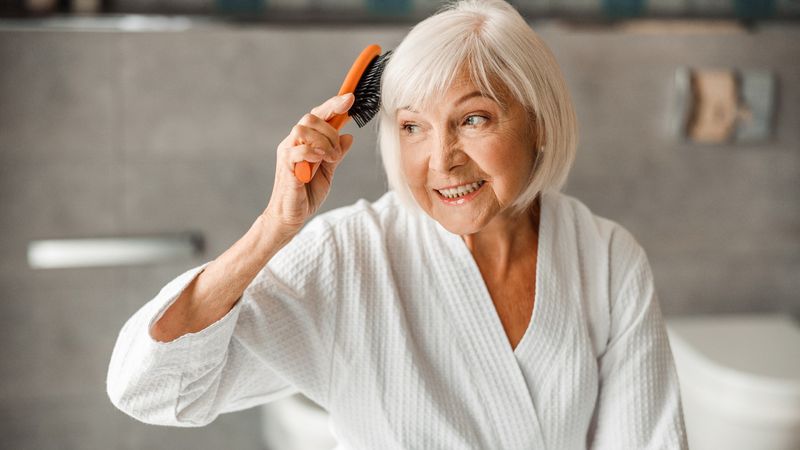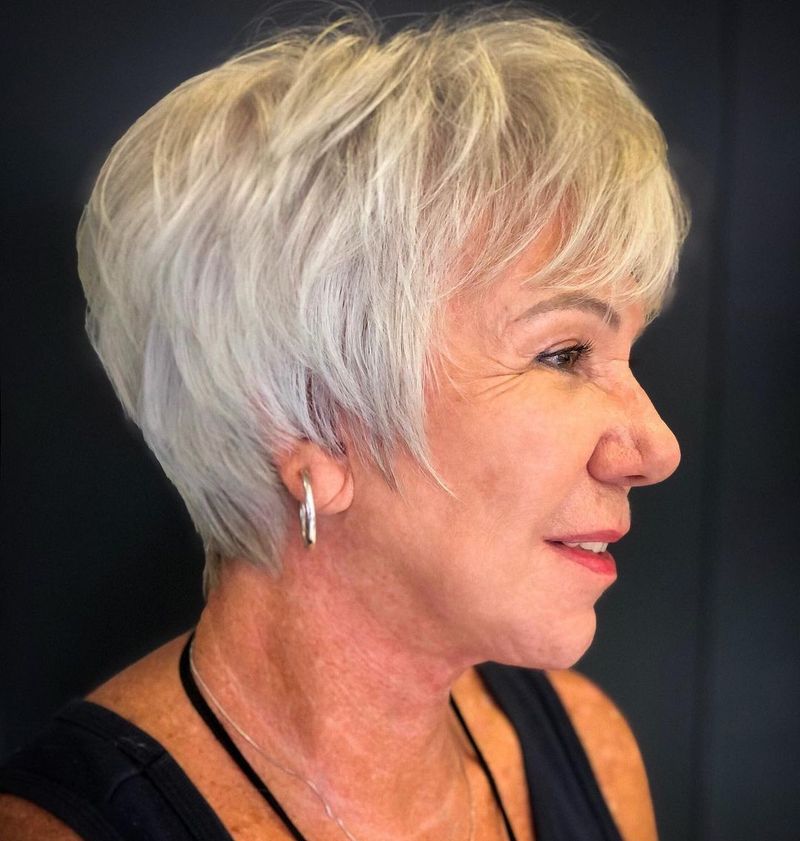Hair loss can be frustrating, especially for women as they age. Many try countless remedies without seeing results because they’re following outdated advice or harmful practices. Understanding what actually works versus what doesn’t is crucial for maintaining healthy hair as you grow older.
1. Washing Hair Too Frequently
Daily shampooing strips natural oils that protect your scalp and hair follicles. This drying effect can weaken hair roots and accelerate thinning.
Try washing every 2-3 days instead, using gentle, sulfate-free products designed for mature hair.
2. Ignoring Nutrition’s Role
Your hair craves protein, iron, and vitamins B and D. Skimping on these nutrients creates weak, brittle strands that break easily.
A plate filled with salmon, eggs, leafy greens, and nuts can significantly improve hair strength over time.
3. Tight Hairstyles That Pull
Ponytails, buns, and braids might seem like good solutions for thinning hair. Unfortunately, they create tension that damages follicles, especially along your hairline.
Loose, gentle styles prevent traction alopecia, a common cause of permanent hair loss.
4. Overusing Heat Styling Tools
Blow dryers, curling irons, and straighteners fry your already fragile hair. The heat damages the protein structure, making strands brittle and prone to breakage.
Air-drying whenever possible and using heat protectants are simple changes with big payoffs.
5. Skipping Regular Trims
Holding onto length while ignoring split ends actually makes hair look thinner. Those splits travel up the shaft, causing breakage higher up.
Scheduling trims every 8-10 weeks keeps ends healthy and creates the appearance of fuller hair, even with less length.
6. Harsh Chemical Treatments
Frequent coloring, perming, and relaxing treatments weaken hair’s structure. These chemicals break down protein bonds, leaving strands vulnerable to breakage.
Stretching time between treatments and using bond-rebuilding products can minimize damage while still allowing style changes.
7. Brushing Wet Hair Roughly
Hair is most fragile when wet. Attacking tangles with a regular brush tears strands from the root and breaks them mid-shaft.
Switch to a wide-tooth comb or wet brush, starting at the ends and working up gradually to preserve your precious locks.
8. Ignoring Scalp Health
Your scalp is the garden where hair grows. Buildup from products, dead skin cells, and clogged follicles suffocate new growth.
Gentle exfoliation with a scalp scrub once weekly removes debris and stimulates circulation, creating optimal conditions for healthy hair.
9. Misunderstanding Hormonal Changes
Menopause significantly alters hormone levels, affecting hair growth cycles. Many women blame normal aging when it’s actually treatable hormonal imbalances.
Speaking with your doctor about hormone testing can reveal underlying issues that respond well to targeted treatments.
10. Vitamin Overload Without Guidance
Randomly taking hair supplements without identifying your specific deficiencies wastes money and can cause harm. Excess biotin might trigger acne, while too much vitamin A actually causes hair loss!
Consult with a healthcare provider for targeted supplement recommendations based on your needs.
11. Sleeping on Rough Cotton Pillowcases
Cotton pillowcases create friction that breaks hair and absorbs moisture from strands. This nightly damage adds up quickly for already fragile hair.
Silk or satin pillowcases allow hair to glide smoothly as you move during sleep, preserving both moisture and integrity.
12. Avoiding Medical Evaluation
Assuming hair loss is just part of aging prevents identifying treatable conditions. Thyroid problems, anemia, and autoimmune disorders often cause reversible thinning.
A thorough medical workup can reveal fixable issues before permanent loss occurs, especially when thinning happens suddenly.
13. Relying on Outdated Styling Products
Heavy mousses and sticky hairsprays from decades past weigh down fine hair and cause breakage. These products weren’t designed for the changing texture of mature hair.
Lightweight, flexible-hold products specifically formulated for thinning hair provide volume without damaging fragile strands.
14. Dismissing Stress as a Factor
Chronic stress triggers hormones that push hair follicles into a resting phase. Many women don’t connect their thinning hair to life challenges they’re facing.
Stress-reduction techniques like meditation, adequate sleep, and gentle exercise can significantly improve hair growth cycles.
15. Excessive Dry Shampoo Dependency
While convenient, overusing dry shampoo creates buildup that clogs follicles and prevents new growth. The powder residue can also make existing hair look duller and more brittle.
Limit use to once between washes and thoroughly cleanse your scalp afterward.
16. Improper Towel-Drying Techniques
Vigorously rubbing wet hair with a regular towel damages the cuticle and creates frizz and breakage. This rough handling is particularly harmful to aging hair.
Gently blotting with a microfiber towel or soft t-shirt removes moisture without causing friction damage.
17. Using the Wrong Brush Type
Metal brushes and fine-tooth combs tear through aging hair, causing unnecessary breakage. The wrong tool can remove more hair than styling products add back.
Boar bristle brushes or brushes with rounded, flexible bristles distribute natural oils while minimizing damage.
18. Believing Hair Loss is Inevitable
Many women accept thinning as unavoidable, missing opportunities for intervention. This defeatist mindset prevents exploring effective treatments.
Modern solutions like low-level laser therapy, prescription medications, and advanced topicals can significantly improve density when started early.
19. Choosing the Wrong Hairstyle
Holding onto youthful styles that require thick, abundant hair draws attention to thinning areas. The wrong cut emphasizes sparseness rather than creating an illusion of fullness.
Layered cuts, side parts, and textured styles can strategically conceal thinning while flattering mature faces.

